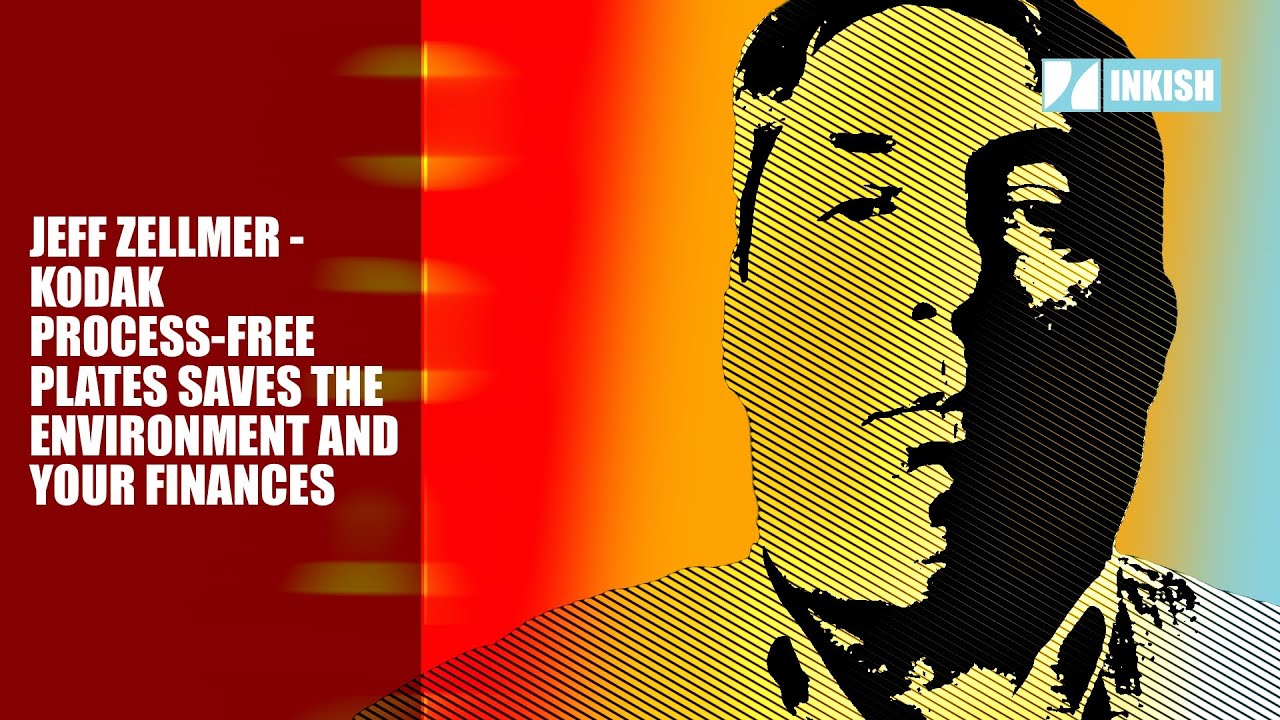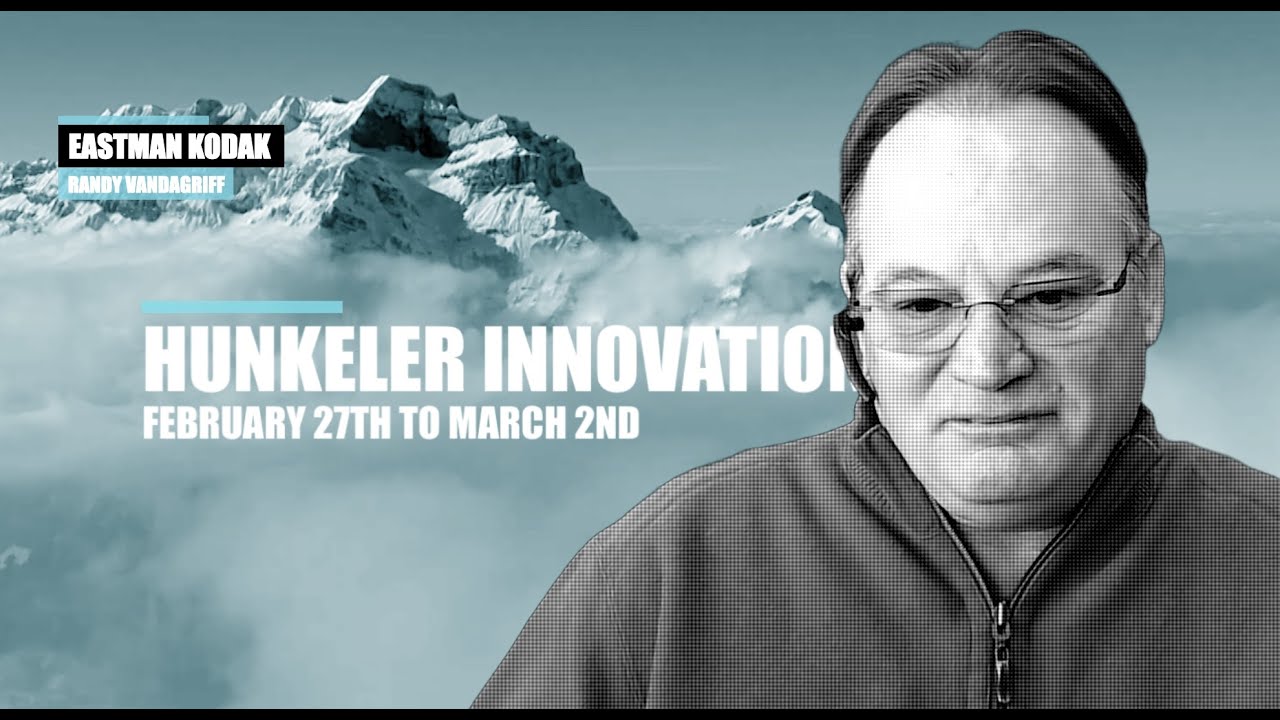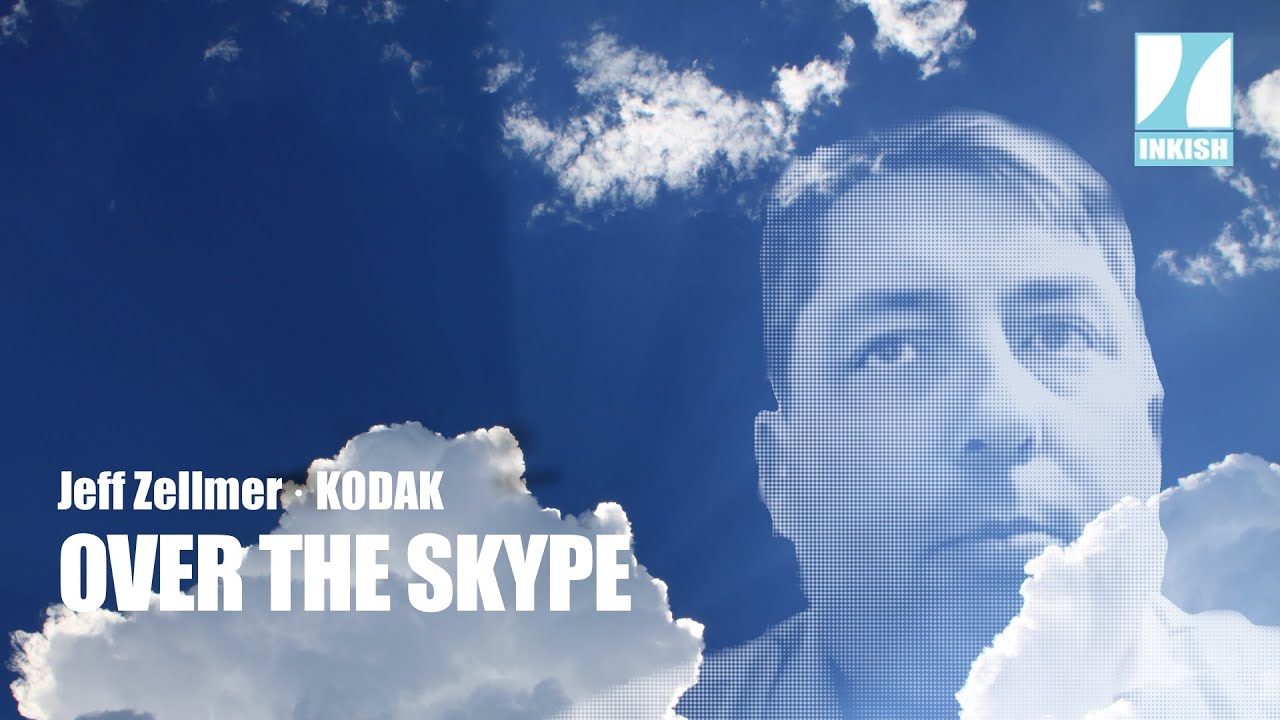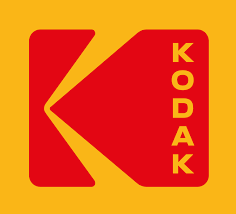Kodak Process-Free Plates Saves the Environment and your Finances · Jeff Zellmer · Kodak
Jeff Zellmer is the VP of Global Sales at Eastman Kodak Company and has been part of the transformation process Kodak is going through for two years. About two weeks ago, Jeff Zellmer posted a LinkedIn post about how much a printing company could save the environment using process-free plates – and that caught our attention – and here we are. Jeff Zellmer instantly agreed to talk to INKISH, and we believe you get good information from watching this episode – so please enjoy!
I’ve been with Kodak a little under two years. I have known of and worked in the past with our CEO Jim Continenza – CEO and Chairman – and he has been extremely successful in many businesses. Has a very large presence with other print companies. And when he took over Kodak as CEO and Chairman, I believe in 2019. I was very interested to work with him again. And I have had this opportunity and loved every minute.
Kodak before Jeff Zellmer?
I always loved the Kodak brand, I guess. I think a lot of people do. I think it brings back great memories. And I’ve always heard in the print industry that they’ve had the greatest products. Very good innovation. A very reliable, great brand recognition. But kind of quiet. And in many print areas around the world where they knew of Kodak, it was not as aggressive in marketing and sales efforts. So that’s what I was brought on board, to maybe change a little bit. So hopefully we are.
PANDEMIC
No, it’s… Obviously the pandemic has been difficult for everyone, both personally and professionally. We’ve had to adapt. Get our word out. And have business conversations with people in venues like we’re doing right now.
SUSTAINABILITY
Kodak is very conscious of how we interact with the environment and sustainability issues. And we were the really the leaders in the world in developing a process free plate. And so the processing is a big, big deal in how we can help printers save and help them not only economically, but sustainability. For example, a processor, a typical processor, is going to use 10 to 20 liters of water a minute.
PROCESS FREE PLATES!
The chemicals. Even a shop that does, you know, a thousand square meters a year is going to save hundreds of gallons of chemicals by going to a process free plate. And then you talk about the electrical savings by not having a processor. But beyond that, there’s certainly economic advantages. You don’t have the space devoted to a processor. You don’t have the time and the make-readys and things like that. So first and foremost, environmentally is important to us, but also economically as well.
KPIs
When we go and sell, we are going to try and help printers be successful in whatever way we can. Many of our clients are extremely interested and care about the environment. So that’s certainly something that we care right along with them. But basically, what we try and do is look at what the client wants to achieve. And see how we can help them achieve it. Whether they gain more efficiency in their shop through workflow in our PRINERGY software. Or reduce space by, you know, taking our processors and going to a process for plate like SONORA. Anything that we can do to help that print shop be more automated, more efficient and more profitable. That’s the type of discussions that we want to get into and do every day.
CORE COMPETENCES?
Kodak’s history has been advanced material, chemicals and print. That’s what we do well. This is our core competency. So whether you’re talking about inks with my colleague John Pennington in Inkjet. Or toners. Our next PRINERGY product or our plates and our software. All of them are designed to be very functional for clients and also give a wide variety of things that we could perhaps help a print shop with.
We do present probably the widest and broadest portfolio of products and services that can help print shops across the world. So we should be able to help somewhere. Plates, for example, and particularly in the process free arena. I don’t think there’s any comparison from ours to anyone else. That’s of course, I’m biased. But when we test… You know, and we do tests. And our customers test before moving to us. We consistently win those battles, so to speak. For quality and durability and, you know, all the factors that print shops are looking for. So we just want a chance to get in and have those discussions with people. And see if we might help their shop perform better.
LEADERSHIP?
Kodak is becoming an aggressive company under the leadership of Jim Continenza. I mean, it’s not any strategy to go out and talk to customers. And we just have to do that more. In the past, Kodak had a different silo for people that sold our prepress and plate products. And a different silo of people that sold our inkjet products. And then a different silo of people that sold our PRINERGY. We’ve taken that and we’ve made what we call a One-Kodak-Strategy. So our clients and our customers can talk to one Kodak. And it doesn’t matter to us whether we can help them with their automation software or their prepress needs. It’s all one team. And that’s made a huge difference to us. And I think it’s part of the reason why we are winning and gaining a lot of market share out there. Customers want to speak with one voice and they want one company to deal with in many areas. And we’re giving them that choice.
COMPETITION?
We don’t want to just survive. We want to thrive. And we want to win. We’re going to be out there fighting. And we think we have the best products. We think we have the best people. We think we’re the best company. When we get into competitive situations, we seem to be doing very well. And we hope to continue that and continue to grow.
DIVERSITY?
I believe an advantage in dealing with clients because we don’t have a bias towards, you know, one type of technology or another. If you want to work with inkjet, we have that technology. If you have a need for toner based technology, we have that. We have traditional press and lithographic in other areas. Most companies, if they come in and do an assessment of your business, it’s really an assessment to see if their product fits. I think we can make more intelligent, collaborative decisions with our clients to help them succeed.
COMMERCIAL OBJECTIVES?
We finished last year just as anyone did in the printing industry with, you know, some tough results. But it was also some very encouraging results. And we’re starting this year encouraged about where things are going. Our pipeline or our funnel seems to be growing. Which is encouraging for everyone in the printing industry. I hope it is for everybody. Because that means that print shops are looking now to the future. How to be more efficient. How to grow. And we’re, you know, obviously here to try and help them do that.








































































